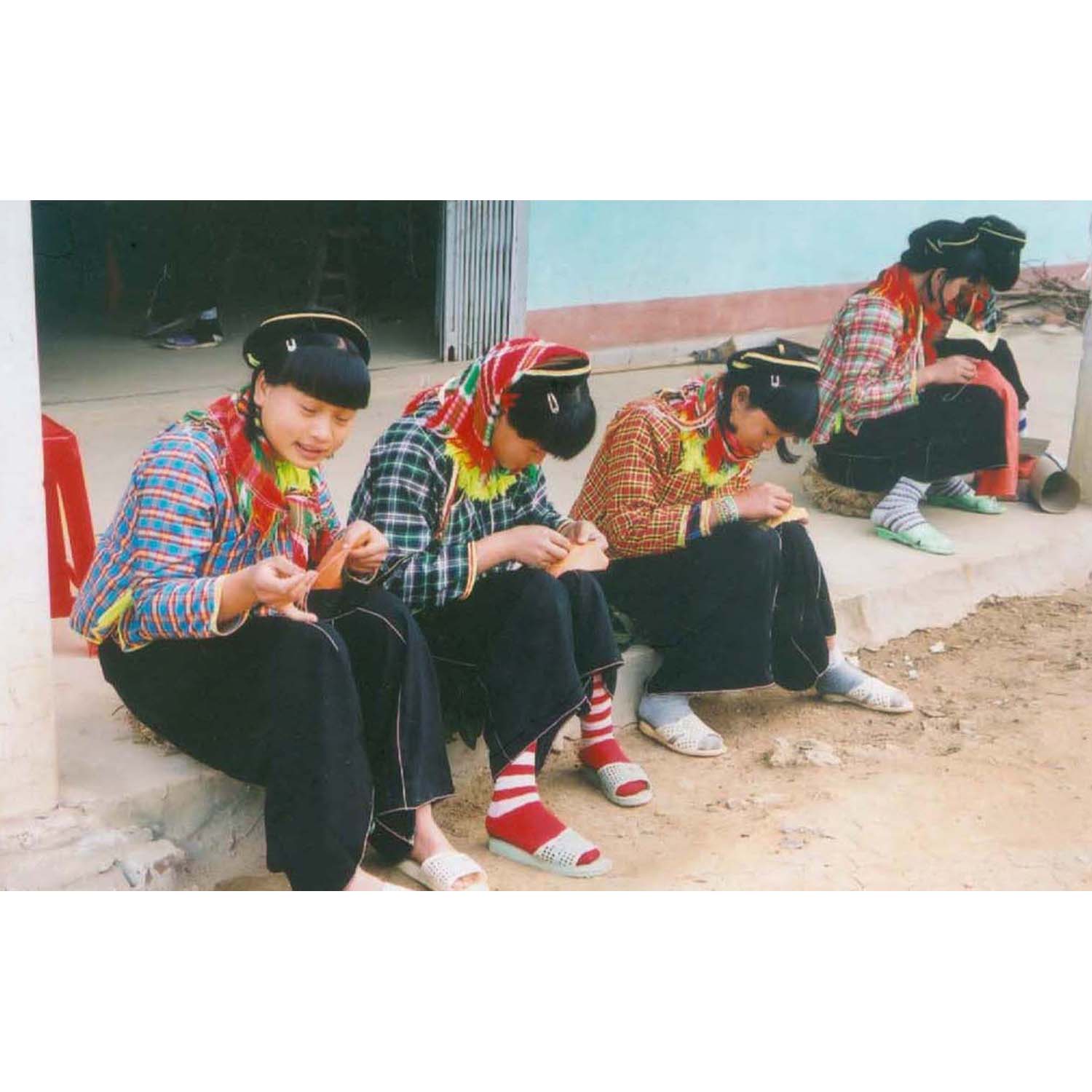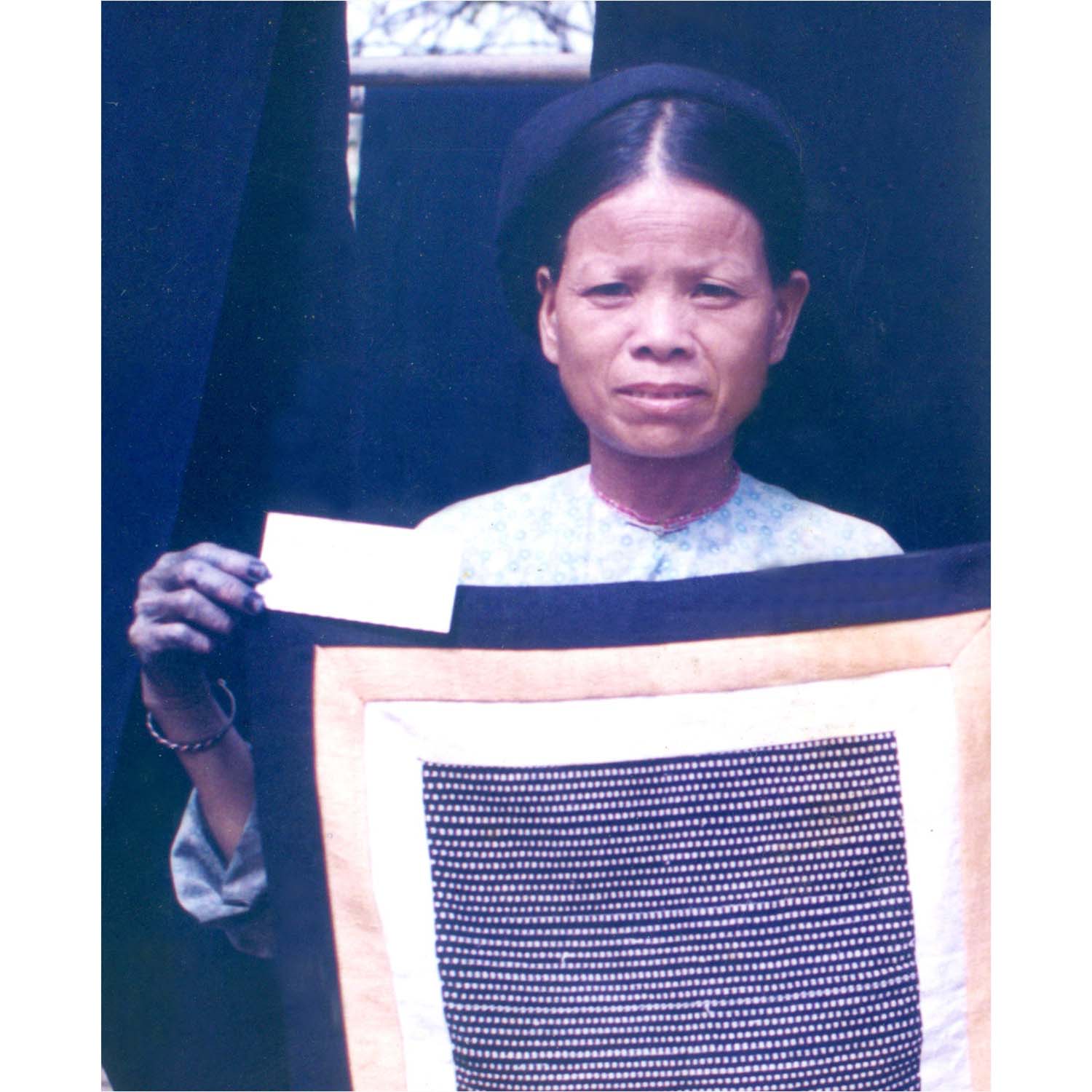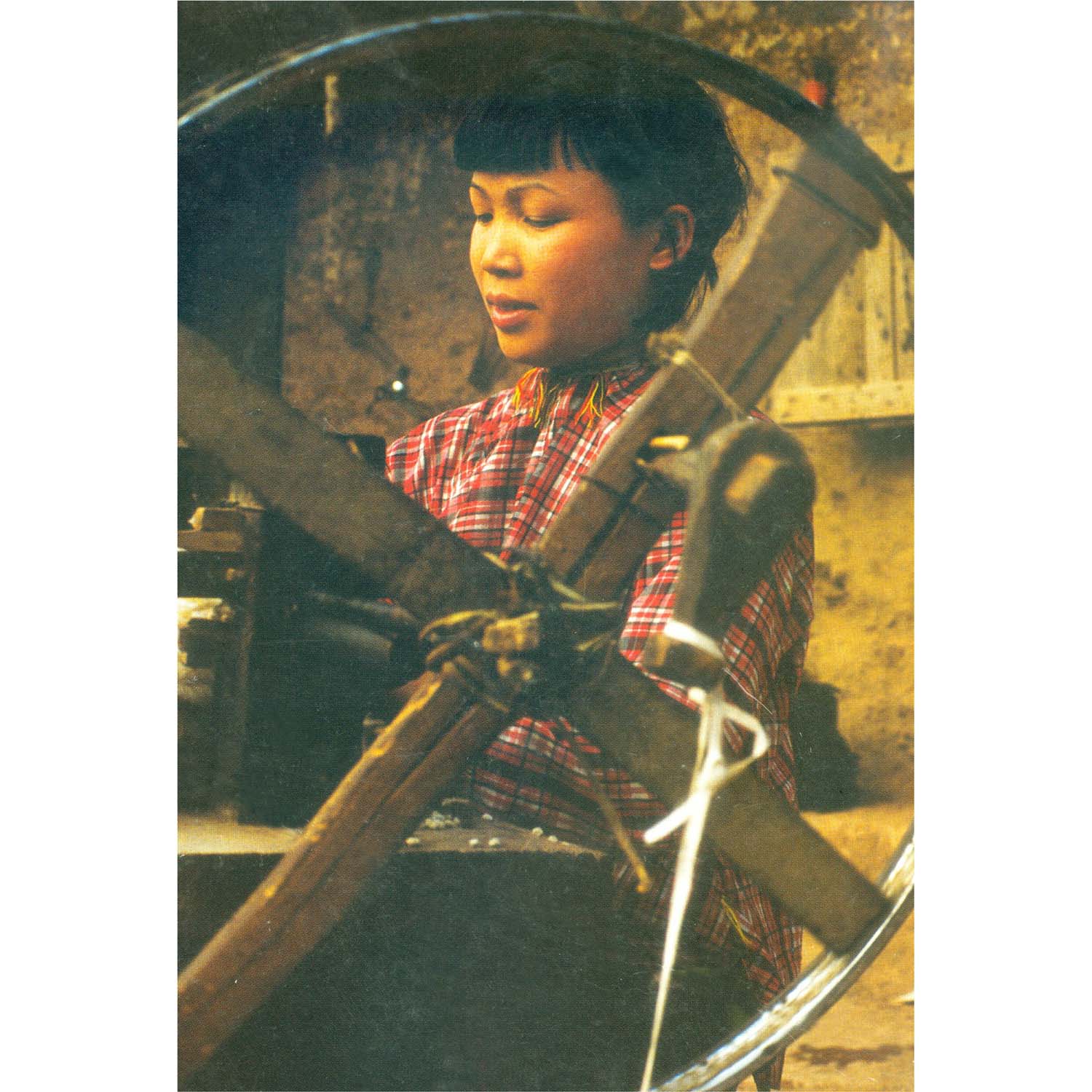About Nung Handicraft from Lang Son
The Nung Women’s Craft Group is comprised of Nung Phan Xinh women from four villages in Lang Son province in the northeast of Vietnam.
Under a project assisted by Oxfam Hongkong and Craft Link, Nung Phan Xinh women were helped to earn income for their family through handicraft production. They were trained in improved sewing techniques, quality checking, and record keeping. Selected member participated in study tours of Hanoi shops and sources of supplies. Through Craft Link handicrafts bazaars held in Hanoi, Nung women had the opportunity to market their products themselves. The project has aimed in part at assisting young women at a “carefree” but crucial period in their lives, before the birth of their first child, to create both immediate extra income and long term security for themselves and their family. The Nung women working with the project integrate production of handicraft for sale with the other seasonal tasks: the bulk of weaving and embroidery takes place in the winter months when their burden of agricultural work is much reduced.
Tradition and innovation
The Nung Phan Xinh are one the few ethnic groups in their area who continue to make their clothing entirely for themselves. They cultivate, spin and weave cotton, which is then dyed with cham (indigo) dye, which they also grow and prepare themselves. In their daily lives, both men and women wear loose tunics and trousers made of indigo-dyed cotton. For special occasions, or trip to the market, young women enliven their dress with a distinctive headscarf of white cloth woven with black bands and colorful embroidered threads. While men will now sometimes wear Kinh (Vietnamese) clothing outside their community, young Nung women persist in wearing their indigo clothing as it forms an important part of their identity. Parents will judge the quality of a girl’s clothing when choosing a bride for their son: a young women with well-made clothing is thought to have the right skill to make a good wife. Young Nung women too, pride themselves on their weaving and embroidery skills: a Nung girl in Vietnamese style clothes purchased in the market is not modern, in their eyes, but too lazy to weave.
Marriages are arranged by the parents, with women marrying in their late teens and men in their early twenties. Following the wedding ceremony, the bride continues to reside at her parents’ house, making occasional visit to her husband’s house. Only when she has given birth to her first child, she will take up permanent residence in her husband’s household.
Though marriages are usually arranged, the Nung are not without romance. It is acceptable for young Nung men and women to seek out “sweethearts”, even after they are married. This is done through exchanging gifts, and is another area of life when women’s craft skills play an important role. A young man will ask a woman to make a shirt for him. If she is interested, she will oblige, though to brush him off she has merely to say that she is too busy. These shirts were once made of plain white cotton, but very recently Nung girls have begun to add elaborate, colorful embroidery. Having presented her shirts, the young woman is then entitled to ask for a gift in return. If she is wise, she will prolong the romance by waiting several weeks or months before asking for her gift in return, which usually consists of two small painted bamboo baskets. One is for keeping spools of thread for her loom, and the other holds lengths of carded cotton, ready for spinning.
Group of Nung girls and boys can be seen on special market days, the girls in their finest headscarves, carrying intricately embroidered bags, and the young men proudly wearing their embroidered shirts, often several at a time.
These relationships are purely sentimental and often after one simple exchange of gifts a women will begin to embroider a shirt for a different suitor. Says one young woman “the more shirts you can make the more boyfriends you can have”. After the birth of a woman’s first child, however, she stop embroidering (both for herself and her boyfriends), exchanging gifts and visiting the market for anything other than buying and selling goods. She is now expected to take up the responsibilities in her husband’s household, and is thought to be too busy with her child to have time for romance.
Though Nung marriage and subsequent “courtship” customs are part of the group’s traditions and go back many generations, Nung weaving and embroidery are creative arts that change continually as individual craftswomen modify old designs and add innovations. This is particularly true at the moment, as young Nung women are undergoing a remarkable period of creativity in their crafts making. Opening up to the outside world frequently poses a threat to minority cultures. Young Nung craftswomen though, have responded to the economic opening in the border area with China, by using the cheap and colorful threads and wool that have become available in the last three years to elaborately embroider their boyfriends’ shirts. They have also reworked other items in heavy embroidery, using intricate design, unlike those of the previous generation of craftswomen, and even very different from their own work of a few years ago.
Products by Nung women of this project use further variations on Nung motifs, and aim to encourage this spirit of creativity, while providing an extra source of income to these craftswomen and their families.
Cham (indigo) dyeing
The black or deep navy-blue cotton that is used in many Nung products is dyed with indigo which is cultivated and prepared by Nung women: this process is extremely labor intensive.
In the first stage of preparing the dye, the indigo stalks are soaked overnight in water. Young women wring out the stalks, elbows deep in sea green liquid. Once lime is added to this mixture, the water turns slowly from murky green to brown, and purple foam begins to form on the surface: the liquid soon turns a deep blue. The dye is tasted to test its quality: a good dye is a salty one, indicating the proper amount of lime has been added. Water is drawn off of this liquid for thirty days, until a muddy purple paste remains.
The process of preparing dye for black cloth (the best quality) differs slightly from that for navy blue. The paste is diluted with water which purified by passing it through a filter: this helps to fix the dye. For navy blue dye, ash is put into a basket with pumpkin leaves laid on top. The basket is placed over the dye jar and water poured through to drip slowly into the jar.
A bowl of the indigo paste is added to the purified water, along with a leaf from the “sau sau” tree (indigenous to this area of Vietnam), which also acts as a mordant. One bowl of the concentrated dye is then added every day for thirty days, when the dye is ready to be used. For black dye the process is the same except that mud must be added to the ash in filter and a piece of bark from the “xanh si” tree is placed in the dye jar. The cloth is dipped twice a day in the dye and hung to dry: lengths of cotton must be dipped daily for two weeks for navy blue, and up to a month for black.
Nung women’s hands remain deep purple to the elbows throughout the dyeing season testifying to their skill and hard work.
For more information, please click here: https://drive.google.com/drive/u/1/folders/1ccOZZnltkQc8CJ7z4ElMzouvBis2PqDm
For more information about this project, please contact:
CRAFT LINK 51 Van Mieu Str., Hanoi, Vietnam
Tel: (8424) 3733 6101
Email: ccraftlink@craftlink.com.vn
Web: www.craftlink.com.vn
FB: facebook.com/craftlink.com.vn
IG: instagram.com/craftlinkvietnam

















